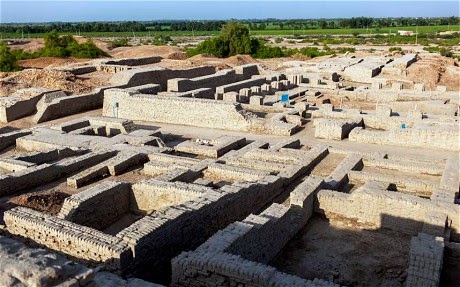In Egypt, amid political turmoil, museums have become targets of vandalism and the theft of priceless pieces. (Dahlia Kholaif, "Egypt's disappearing ancient artifacts" Al Jazeera 14 October 2013).
Barbed wire and rows of army tanks have replaced the once snaking queues of tourists outside the Egyptian Museum of Cairo who were eager to witness its massive collection of ancient artifacts. The museum's deserted chambers and dusty treasures speak of the damage inflicted upon Egypt's tourism industry, as well as the country's vast archaeological prizes over the past few years of unrest. Near the capital's Tahrir Square, the museum - one of Cairo's main tourist attractions - was at the centre of massive rallies that toppled two presidents since 2011. Standing side-by-side the fire-gutted headquarters of ousted president Hosni Mubarak's National Democratic Party, its walls now carry paint marks covering up grafitti insults targeting his ousted successor Mohamed Morsi. While Egypt has struggled for years now to shape its future after the January 2011 revolution, its prized past has fallen victim to sporadic violence and security lapses. Inside the museum, less than a dozen tourists wander around its dim-lit corridors. A banner reading "Destroyed and Restored" leads into a room where items looted or bashed by vandals have been salvaged, including several statues of King Tutankhamen. One such relic was of the young pharaoh on a boat. According to the description, the statue was found broken on the floor inside the museum, and the figure of the king was stolen but retrieved on April 12, 2011.The situation is deteriorating and precious cultural artefacts are still in danger in the instability caused by the military-run state's inability to combat lawlessness and wanton destructiveness of the local Moslem population:
Meanwhile, the latest museum attack occurred in August in the Egyptian city of Minya. Rioters supporting Morsi stormed the Malawi National Museum, wrecking and stealing valuable treasures. The rampage followed nationwide clashes after the dispersal of two pro-Morsi protest camps in Cairo, in which hundreds of people were reportedly killed. Of the total 1,089 artifacts inventoried at the museum, 1,039 were stolen, the Ministry of Antiquities told Al Jazeera. More than 600 items were reclaimed, but about 400 others are still to be found, according to the ministry.Collectors outside foreign countries with failing state organizations and unstable leadership should be allowed to help preserve and look after the world's precious heritage, instead of leaving it to the mercies of frenzied mobs of religious fanatics intent on obliterating anything which does not reflect their false beliefs about the world and which they associate with hated ousted dictators.






